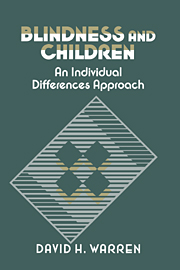Book contents
- Frontmatter
- Contents
- Preface
- Introduction
- Part I Interaction with the physical world
- 1 Perception of the physical world
- 2 Motor and locomotor interaction with the physical world
- 3 Understanding the physical world
- 4 Spatial understanding and spatial behavior
- Part II The acquisition of cognitive skills
- Part III Adapting to the social world
- Part IV Summary
- Conclusion
- References
- Author index
- Subject index
3 - Understanding the physical world
from Part I - Interaction with the physical world
Published online by Cambridge University Press: 02 December 2009
- Frontmatter
- Contents
- Preface
- Introduction
- Part I Interaction with the physical world
- 1 Perception of the physical world
- 2 Motor and locomotor interaction with the physical world
- 3 Understanding the physical world
- 4 Spatial understanding and spatial behavior
- Part II The acquisition of cognitive skills
- Part III Adapting to the social world
- Part IV Summary
- Conclusion
- References
- Author index
- Subject index
Summary
In order to get along in the physical world, the child must acquire a basic understanding of its characteristics. In adapting to everyday life, it is not vital to understand these characteristics at the level of physical laws or theories, but it is important to understand the basic concepts of physical regularity. For example, when released, objects fall down rather than up, and other things being equal, this is a perfectly reliable property of the physical world. So is the fact that objects tend to retain their characteristics over time and place; and so on.
These varieties of understanding are cognitively adaptive. If the state of the physical world were independent at each moment from that at the previous moment, there would be no regularity over time. There is, of course. But if a child did not, at some level, understand these regularities of the physical world, then the cognitive demands of adapting to it would be immeasurably greater. Understanding the basic characteristics of the physical world releases the child from the necessity of attending to its state at each successive moment.
What properties are involved? The list can, of course, be subdivided at will. Our purposes will be best served by a relatively rough division into the following categories:
Object permanence: the understanding that objects retain their existence and identity even when they are not stimulating the senses.
Properties of matter: the understanding that properties such as mass, number, and volume are retained despite changes in perceptual qualities.
Causality: the understanding of cause and effect, that a given action necessarily has a consequence.
[…]
- Type
- Chapter
- Information
- Blindness and ChildrenAn Individual Differences Approach, pp. 62 - 96Publisher: Cambridge University PressPrint publication year: 1994



